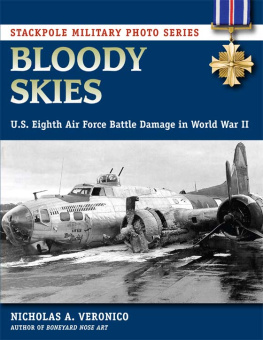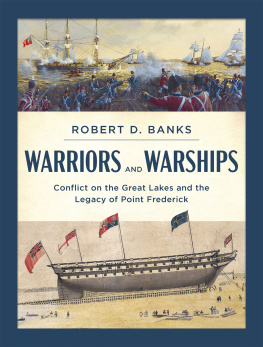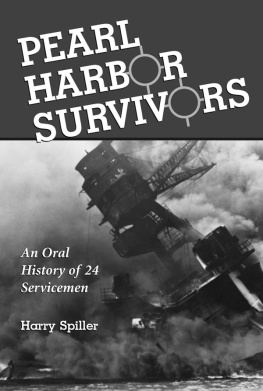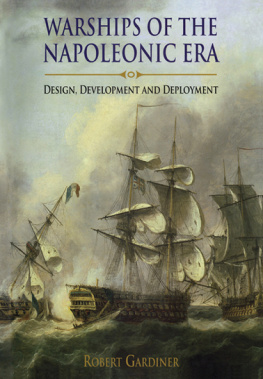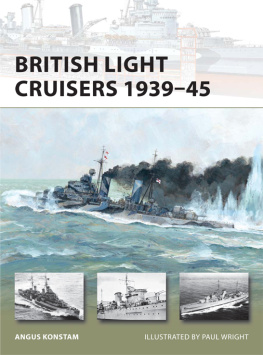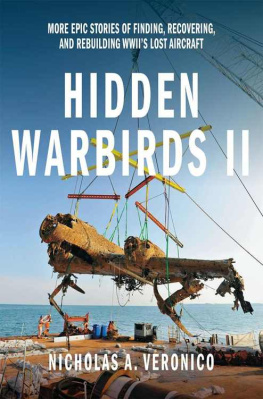For Tony and Kathleen
First published in 2015 by Zenith Press, an imprint of Quarto Publishing Group USA Inc., 400 First Avenue North, Suite 400, Minneapolis, MN 55401 USA
2015 Quarto Publishing Group USA Inc.
Text 2015 Nicholas A. Veronico
All rights reserved. With the exception of quoting brief passages for the purposes of review, no part of this publication may be reproduced without prior written permission from the Publisher.
The information in this book is true and complete to the best of our knowledge. All recommendations are made without any guarantee on the part of the author or Publisher, who also disclaims any liability incurred in connection with the use of this data or specific details.
We recognize, further, that some words, model names, and designations mentioned herein are the property of the trademark holder. We use them for identification purposes only. This is not an official publication.
Zenith Press titles are also available at discounts in bulk quantity for industrial or sales-promotional use. For details write to Special Sales Manager at Quarto Publishing Group USA Inc., 400 First Avenue North, Suite 400, Minneapolis, MN 55401 USA.
To find out more about our books, visit us online at www.zenithpress.com.
Digital edition: 978-1-6278-8664-2
Hardcover edition: 978-0-7603-4756-0
Library of Congress Cataloging-in-Publication Data
Veronico, Nick, 1961
Hidden warships : finding World War IIs abandoned, sunk, and preserved warships / Nicholas A. Veronico.
pages cm
Includes bibliographical references and index.
ISBN 978-0-7603-4756-0 (hardcover with jacket)
1. World War, 1939-1945--Naval operations. 2. Warships--History--20th century. 3. Shipwrecks--History--20th century. 4. Underwater archaeology. 5. Warships--Conservation and restoration. 6. Warships--Salvaging. I. Title.
D770.V47 2015
940.545--dc23
2015001525
Acquisitions Editor: Erik Gilg
Project Manager: Madeleine Vasaly
Art Director: James Kegley
Layout Designer: Helena Shimizu
On the front cover: High angle view of the bow of the Rosalie Moller, World War II shipwreck. Red Sea, Egypt. Mark Doherty/Shutterstock
On : The USS Arizona Memorial. Brett Seymour/NPS
HIDDEN WARSHIPS
FINDING WORLD WAR IIS ABANDONED, SUNK, AND PRESERVED WARSHIPS
NICHOLAS A. VERONICO

CONTENTS
ACKNOWLEDGMENTS
Hidden Warships is a tribute to many dedicated people whose actions have added to the historical record of World War II. And although their individual motivations vary greatly, they are united by a common interest. For the divers, their motto is Take only pixels, leave only bubbles. That is why, more than seventy years after the beginning of World War II, there are still many interesting objects to see on the sunken ships of the era.
Many surviving ships would not be floating without the cadre of trained volunteers of every craft who work so hard to maintain them. Their efforts to pass their trades down to todays up-and-coming shipwrights, electricians, mechanics, masters, sailors, and deck hands are an endeavor worthy of our financial support. The websites of many preserved ships are listed in the resources section, and those and other vessels deserve your support.
I would like to express my gratitude and thanks to the following people and institutions for their generosity in sharing their time and materials that made this work possible: the Abele familyBruce, Susan, and John; Bob Alton; Bobby Anderson; David Anderson; Jerry Anderson; Hector Bado; Dan E. Bailey; Caroline and Ray Bingham; Wally Boerger; Joan Burke, Project Liberty Ship; Roger Cain; Tom Cates; Paul Chedotal, the U-Boat Story/Merseytravel; Ron Close; Tom Colgan; James P. Delgado; Jim Dunn; Jrme Espla; Caroline Funk; John Geoghegan; Ellen Gerth, Odyssey Marine Explorations; Erik Gilg, Nichole Schiele, and Madeleine Vasaly, Zenith Press; Jerry Gilmartin; Laura Givens, Historic Ships Baltimore; Doug Grad; Kevin Grantham; Tiffany Gwynn, and John Royal, Naval Historical Center; Charles Hinman, USS Bowfin Submarine Museum and Park; Alexander Hub, Deutscher Marinebund e.V.; Terry Kerby, and Steve Price, Hawaii Undersea Research Laboratory; Daniel J. Lenihan; Taras Lyssenko; Joe Mazraani; Dale Messimer; Bob Mester; Randy Peffer; Stan Piet; Christophe Resse; Elizabeth Ruth-Abramian, Los Angeles Maritime Museum; Lee Scales; Christopher Scott, SS Lane Victory; Brett Seymour, National Park Service; Bradley Sheard; Dick Sleeter; Parks Stephenson; Patrice Strazzera; Ron Strong; Scott Thompson; Jeff Trentini; David Trojan; Rick Turner; Betty Veronico; Karen and Armand Veronico; John Voss; Thomas Weis, Wurttemberg State Library, Stuttgart, Germany; and Jennifer Wiggins, Auburn University LibrariesSpecial Collections/Archives. My sincere thanks. And, of course, any omissions or errors are my sole responsibility.
Nicholas A. Veronico San Carlos, California, 2015
INTRODUCTION
MUCH OF WORLD WAR IIS NAVAL HISTORY LIVES ON AS HIDDEN WARSHIPS
In the years leading up to and during World War II, the Allied and Axis powers built more than 120,000 shipsships of all sizes. During the conflict thousands of vessels were sunk, and after the war many more were scrapped or converted to perform new tasks.
The estimate of ships on the bottom of the worlds oceans is staggering. US Navy combatants of all sizes, from water barges (classified as YW) to battleships (BB) to fleet aircraft carriers (CV), are counted at more than 1,875 vessels. The Allies sank 766 German submarines during the war, and Nazi U-boats in turn sent more than 2,775 Allied ships to the bottom. In the Pacific, the Allies sank 3,032 Japanese vessels, which displaced more than 10.5 million tons combined. The typical Japanese freighter, equivalent in size to an American Liberty ship, was 444 feet long with a beam of 58 feet and displaced seven thousand tons.
On the other end of the scale, Americas largest combatant ships of World War II, Iowa class of battleships, displaced forty-five thousand tons and were 887 feet 3 inches long with a beam of 108 feet 2 inches. In contrast, Japans super battleship Yamato displaced sixty-four thousand tons with an overall length of 862 feet 10 inches and a beam of 127 feet 7 inches. The Japanese lost all eight of their prewar battleships, and the two sister ships constructed during World War II, Musashi and Yamato, were sent to the bottom by Allied aircraft in 1944 and 1945, respectively.
In addition to the ship losses by the navies of the world, the United States put more than eighteen thousand vessels up for disposal as surplus after the war. These former combatants were given a new lease on life serving in a variety of civilian roles, from salvage tugs to transports to freighters moving goods for the new global economy that emerged after the war. Eventually, most were removed from service, many were scrapped, and some were hidden away, while others ended up on the bottom for one reason or another.
These vessels of war became todays hidden warships.
Next page

